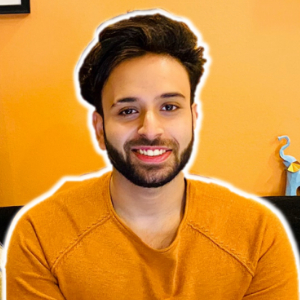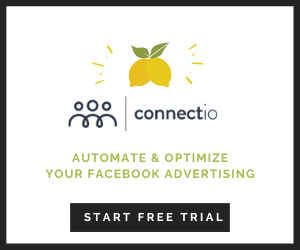Campaign optimization is the most essential part of media buying. It defines the success of a campaign. In this post, we will be discussing the campaign optimization tips for facebook, google adwords, and native ads. This would essentially cover the major part of your media buying since it caters the largest media buying sources.
Here, we are specifically discussing campaign setup, placement optimization and the best practices which will result in a better delivery of your ads keeping the CPC to the lowest possible threshold. We have also covered topics like conversion optimization, creative optimization, media buying tips, which talks in-depth and should be read along with this article. However, after completing this article, you’ll have a fair idea on how you can create and run effective native and display campaigns across the top platforms. So, let’s get started with campaign optimization tips.
Campaign Optimization Tips for Google AdWords: Best Practices
A quick overview of how you can set up campaigns on Google AdWords with campaign optimization tips that will come handy for you. One of my strongest recommendations is that you create at least 2-3 different audience segments and specifically target one platform at a time (desktop or mobile or tablet) and then keep on optimizing for other parameters. Also, make sure you tally your adword results with analytics results to achieve performance optimization.
- Define your conversion goal like sales, lead, website traffic, app promotion, brand awareness, product and brand consideration, etc. The objective is extremely crucial since it gives Google an idea of your campaign type and the performance results you’re expecting out of the campaign. The algorithms will show your ads to the targeted audience keeping in mind the objective of your campaign.
- Next, you have to choose a campaign type: search, display, shopping, and video. Based on your choice, the ads will be displayed either on Google search, YouTube, Google display network, and other platforms.
- You’ve to set up the tracking pixel to ensure the conversions are recorded. It involves placing the tracking codes before the closing of the <head> tag.
- Choose the location and the language you’re looking to target.
- From the bid strategy, either choose maximize clicks or manual CPC. I would suggest you to choose the maximize clicks option initially and then moving to manual CPC once you’ve in idea of the average CPC for your campaign.
- Enter the daily budget and choose the option to show your ads either on desktop, mobile, or tablet. Also, you have the option to opt out specific content groups which I suggest you take a look.
- Now you can choose your preferred audience in terms of interest, demographics, and keywords. You can also make a mix of them for the best targeting as well.
- Once these are done, you’ll have to create the ad units by providing the landing page url, description, and creatives. I suggest you have at least 5-10 image thumbnails per campaign.
Campaign Optimization Tips for Native Ads: Best Practices
Here, we are going to discuss some of the crucial media buying tips and tricks that can help you with campaign setup. We have tried covering as much as possible in this section, however, the campaign setting options vary based on the ad type and also the company you’re buying the traffic. Be assured, we have covered all the major aspects of campaign trafficking in this section.
- It is recommended to target desktop and mobile/tablet separately since the performance and the ROI of the platforms varies. Usually desktop CPCs are higher compared to mobile, however, the conversion rate can fluctuate based on the campaign objectives.
- Define a marketing objective which can be lead generation, online purchases, brand awareness, web engagement, mobile app install or others. This will enable the algorithm to target the appropriate audience to deliver higher ROI.
- We recommend creating geography specific campaigns since conversions can vary country wise unless you’re targeting a global audience (even then also you should create separate campaigns for separate countries since CPC vary country wise).
- Operating systems can play a crucial role for your campaigns, and if it is so, you can specifically target the OS based on your campaign objectives.
- Enable brand safety like integral ad science to ensure the traffic you’re getting is genuine.
- Define your audience based on interests and keywords which would best correlate with the objective of your ad campaign.
- You have the option to select manual/fix bid or optimized/smart bid. In the first, you specifically define the CPC while in the latter you allow the algorithm to determine a CPC. You can choose either of the two, however, I would prefer a fixed CPC and then moving to a smart bid when I have to scale the campaign.
- Define your ad delivery as optimized/balanced and set up the daily or monthly spending limit. This would ensure that you’ve sufficient time to monitor the campaign and make necessary changes if needed to your campaigns.
- Setup macros to further track the source of your traffic across campaigns so that you can better optimize the conversions and monitor the ROI. We will write a separate article on tracking code and marcos for more in depth information.
Campaign Optimization Tips for Facebook: Best Practices
In this section, we are going to discuss some of the crucial media buying tips that are essential for you to get started with Facebook advertising. One of the most important things when it comes to Facebook is choosing the appropriate audience for your campaigns and ensuring you can scale your campaign. Secondly, you’ve to optimize your ad creatives for the highest click through rate and that will only enable you to reach the lowest ever CPC and yield better conversions. So, take a detailed look at campaign optimization tips for facebook.
- Define your conversion goal like website engagement, app installs, video videos and also the landing page type aka. Website, mobile app, whatsapp, facebook messenger.
- Enable dynamic creative where you need to provide individual assets, like images and headlines, and automatically generate optimized creative combinations for your audience.
- Set up the daily budget and ensure you enable the bidding type as lowest link click strategy. In this case you’ll be charged only if the link is clicked and would not be charged for impressions. So if your CTR is high, you’ll automatically see lower CPCs based on your campaign audience type and ad bids.
- Also note that you cannot change any of the campaign budget settings once the ad is approved except the daily budget. You might have the option to set up manual CPC as well based on your ad manager account type.
- Audience selection becomes extremely crucial when you are buying traffic from Facebook. You have to ensure the targeted cities are metro, the audience is fairly defined but not specific (since this will increase the CPC) and also the interests should match the content of your landing page.
- It is advised to set up 2 campaigns with everything the same except the targeting audience and you’ll be able to see which campaign performs better eventually.
- You have the option to choose from manual and automatic placements. I’d suggest you go for automatic placement initially, see which placements are working best and then duplicate the campaign and select only those manual placements which are working fine.
- At least have 5-6 images for your creatives and a good primary text and headline. The choice of having a call to action button is entirely your decision based on the objective of the campaign.
- Enable conversion tracking through facebook pixel and define URL parameters to analyze your traffic channels on Google analytics.
- Once done, you can go ahead and publish the campaign and give it at least 12 hrs for the team to review and go live. Your campaigns may not go live if it has objectionable text and images and I suggest you go through Facebook’s content guidelines to have more idea on this.
It is imperative to test a few media buying sources to understand which platform delivers you the highest ROI. Also, it is suggested that you split your media buying across a few sources to ensure the campaign optimization and KPIs are met. This will in turn boost your media buying strategy since you’re adept with all the major platforms and are able to drive ROI across them. Hope you have found this article on campaign optimization tips and tricks informative and will continue visiting Mediabuyinginfo for more interesting posts and topics like this.
Our 'Handpicked' Tools for Internet Mareters
- Native Advertising Software Tool: Brax, Anstrex
- Facebook Advertising Software Tool: Audiencer, Revealbot, Connectio,
- Social Media Advertising Software Tool: SproutSocial, SocialBee,
- Internet Marketing Software Tools: Semrush, SproutSocial,



I and my team research various media buying platforms and can help you choose the right network; so you could rake in more greenbacks with an increased ROAS. I am just a mail away, so reach out to me if you need assistance with scalable media buying. mail: [email protected]


